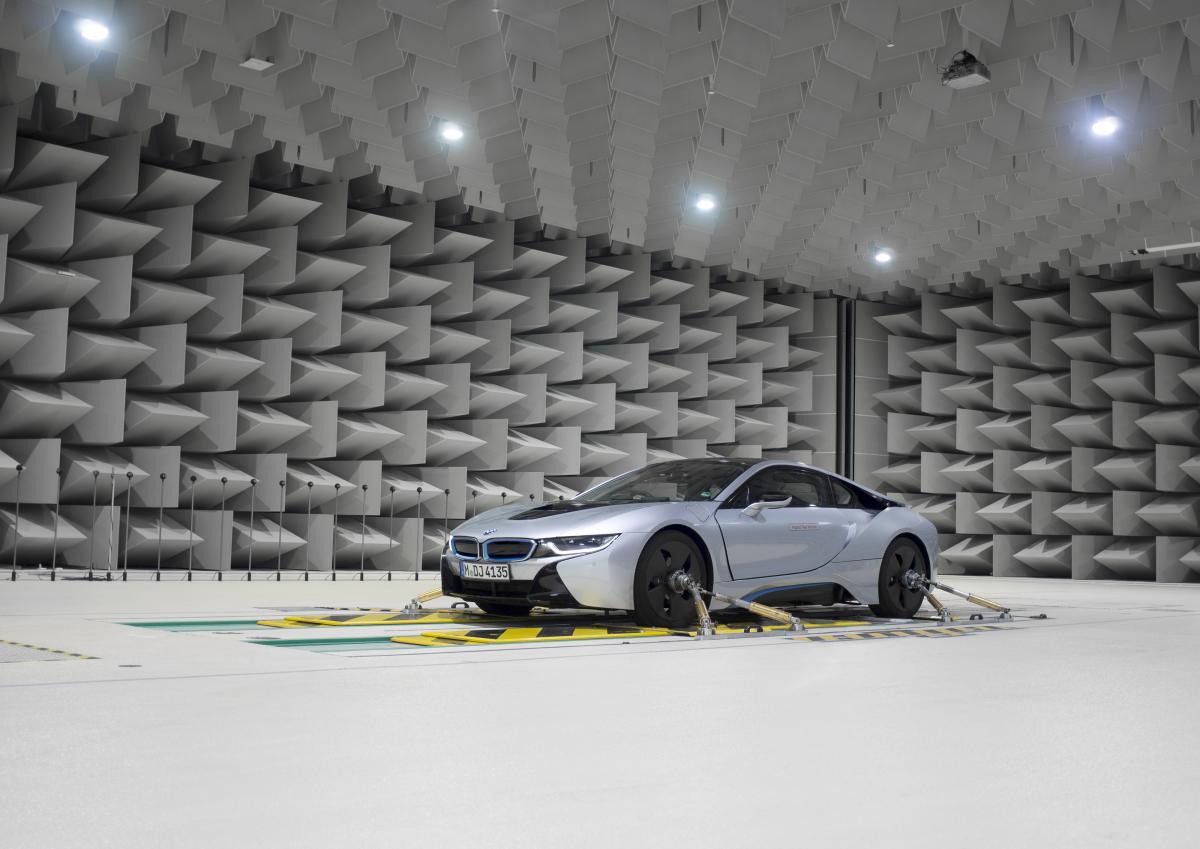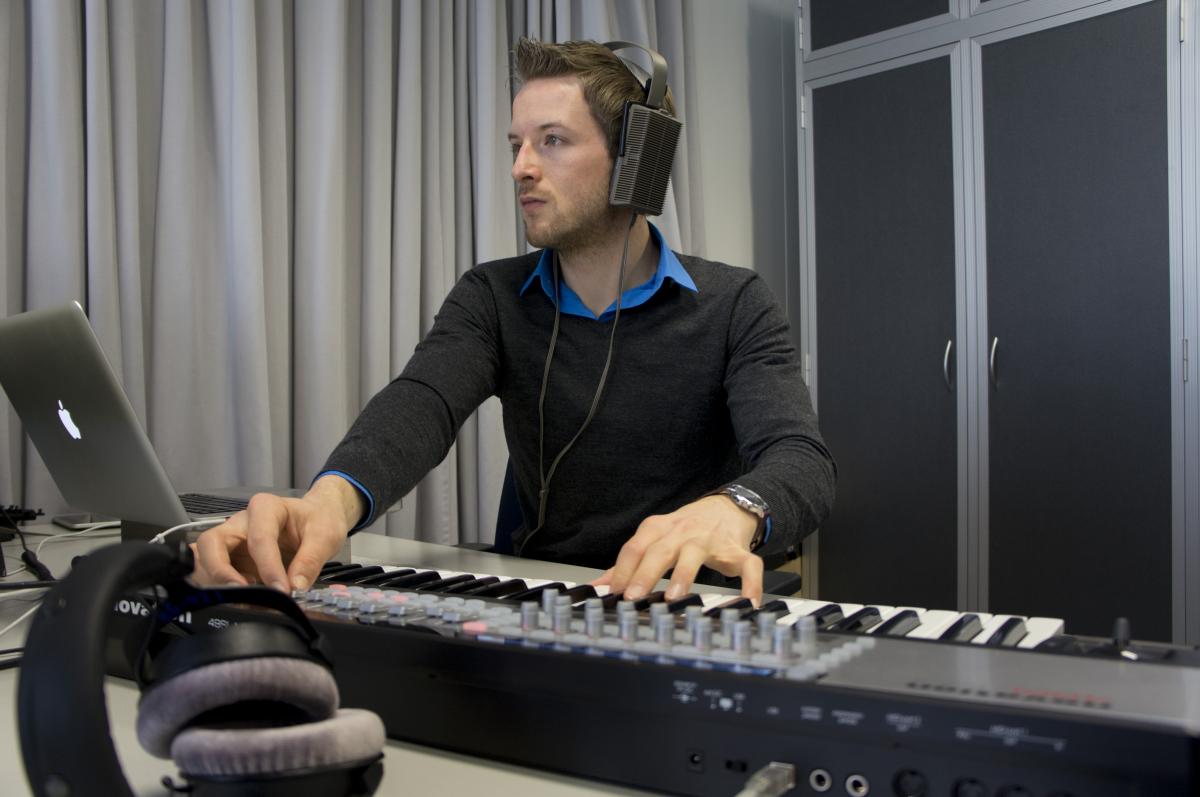Bells and Whistles: Giving Devices a Voice
The sounds of the natural world speak to those who can interpret them: ‘The buffalo are headed east’, ‘Rain is just over the horizon’. The sounds of the technological world carry different messages: ‘Your headlights are on’, ‘The eggs are done’. Who creates these sounds and how?
Cover Photo: The junction of Robson Street and Bute Street in Vancouver. Crossing signals in this city produce bird calls that tell pedestrians not only when to walk but also whether they are traveling north-south or east-west. (Photo: Nicole Simpson)
Dave Sandhu was walking across the junction of 29th Street and Lonsdale Avenue in North Vancouver when he noticed something strange: the pedestrian signals were no longer making bird noises.
That was a problem. The unusual pedestrian crossing sounds, a ‘dee-doo’ cuckoo noise for north–south crossings, and a melodic chirping for east–west, had become a crucial tool to help pedestrians navigate busy streets, not only in Vancouver, but in other cities across Canada as well. Without them, blind people wouldn’t know when to cross the road, and even those who could see might not immediately notice that it was time to walk. Fortunately, the signalling equipment was a product of Novax Industries, the company which employs Sandhu as a Business Development Manager. ‘I called the city and said we needed repairs at that corner of that intersection,’ Sandhu says. ‘We’ve got good relationships with the city and its engineers.’
Product sound designers are unsung heroes, and without them the world would be much quieter, less convenient and perhaps more dangerous. Their work and expertise permeates everyday life, buzzing, beeping and chirping from cars and computers, mobile phones and microwave ovens, televisions and traffic signals. Each of these devices comes with a set of sounds specifically designed to help us use them in the best way. Properly designed and implemented, these sounds are barely noticeable, calling attention more to what they mean than to themselves. As discreet and fleeting as they are, however, a staggering amount of thought goes into them.
You seem to enjoy a good story
Sign up to our infrequent mailing to get more stories directly to your mailbox.Effective product sounds have a few things in common, whether they come from a home appliance or a heart monitor: they need to be loud enough to distinguish themselves from any background noise. They need to be distinct from other sounds in the environment. They must not occur so frequently that the human brain stops paying attention to them. Short sounds are usually better.
Lindsay McCunn, an assistant professor in environmental psychology at the University of Washington Tacoma who has spent a lot of time thinking about how humans perceive sound, offers some additional guidelines. Context, she says, is key. ‘If you think about the way we get a beep for a text, it’s all about the sound, a neutral stimulus, being connected with something meaningful: “I have a text”, “The microwave is done”, “The coffee is ready”. And that meaning gets associated so that we respond in a predictable way.’

A BMW i8 undergoing measurement of its interior and exterior acoustics in a test facility at the company’s Munich headquarters. (Photo courtesy of BMW AG.)
‘You want something that is as streamlined and efficient as possible so that you’re not constantly thinking, “What does that sound mean?”. Every time you get a text, you’re not going to want to look down at your phone and interpret or cognitively process what it means. You need to be able to hear it and understand automatically what it is.’
An effective product sound has to hit all those marks. If it misses even one or two, it becomes pointless. Car alarms, for example, are distinctly audible and instantly recognisable, but they’ve become so common in big cities that nobody takes any notice of them. The fact that so many of these everyday signals do hit all those marks is a testament to product sound designers and their special kind of magic.
When studio engineers finish recording a piece of music, they start mixing the tracks together, and they usually do it in a specially acoustically conditioned space. Emar Vegt works a little differently. When he finishes recording the material he needs, he climbs into a car with his laptop, shuts the door and starts mixing there. Since his company is BMW, finding a car to work in isn’t really a problem.
Vegt is a senior sound designer at the company’s Munich headquarters. Newer models, including the i3 and i8 electric cars, feature his work (the ‘fasten seat belts’ signal, for example, or the sound when the navigation system turns on). They must be calm and soothing, rather than annoying or alarming, yet at the same time able to communicate that the driver needs to take an important action, like putting on a seat belt. Furthermore, they have to convey the quality and luxury befitting a car costing in excess of €130,000 (US$148,000).

Emar Vegt, senior sound designer at BMW, working on sounds for the i8. (Photo courtesy of BMW AG.)
‘We approach it like a composer would,’ Vegt explains. ‘We try out lots and lots of things, and then narrow it down to see which ones work, and iteratively improve them. At the start, with the i8 and i3, we didn’t have a clear solution for what the best sound would be, so we explored lots of different sounds, recorded them ourselves, then found what we liked and narrowed it down until we had the sound we liked in the car.’
Perhaps surprisingly, most of what Vegt does involves using widely available software and instruments rather than specialised equipment available only to product sound designers. If there is any magic here, it is in the way he and his colleagues process and layer the sounds to get the specific effect they want. ‘If you listen closely,’ Vegt says, ‘in the warning sounds for [the i3 and i8], there is a bit of guitar, a bit of synthesiser, a bit of piano. All in all, there are close to 25 layers of sound.’
BMW takes its sounds seriously, and Vegt’s team also labours over the physical, mechanical sounds of the engine and fixtures, which are a little trickier to shape. Getting a nice sound from a plastic door handle means experimenting with materials and designing prototypes. Vegt says that he and his colleagues rely on existing features of previous models as a guide for what sounds good. ‘All the previous generations of car door handles are used in the design of a new one. When the first prototypes are being built, they have maybe 70 or 80% of the intended quality already. It’s then just a matter of listening, and finding out what can be even better. We change materials, fine-tune it, until it’s the way we want it to be.’
Another designer who knows how painstaking it can be to create just the right sound is Jim McKee. Unlike Vegt, who works for one company, McKee has worked for companies as diverse as Apple, Pinterest and Pixar. The Facebook mobile app’s video call notification sound was designed by McKee and his colleague Everett Katigbak, and its rising tones are the notes F, A, C and E, a happy accident that resulted in just the effect they were looking for.
Dealing with clients, McKee says, is usually about narrowing things down. ‘I get a sheet that defines the look and feel that the company uses for their brand,’ he says. ‘I don’t want them to go into something that they don’t want to get into, so the first phase is just exploratory: we’re throwing them a lot of different types of sounds just to get a sense of how they react and to home in on a direction and aesthetic. That kind of shotgun approach at the beginning quickly narrows down to two, three, four options. We can then explore those options and build them out. Usually, they migrate towards one particular gesture.’
Dave Sandhu and Novax Industries are currently working with the Canadian government on a new project, one which Canadian citizens may have mixed feelings about: replacing the chirping of the pedestrian crossing signals, at least outside cities, with a cheerful four-note phrase known as the Canadian Melody.
The reason was simple: the chirping wasn’t fulfilling one of the principles of product sound design. Outside urban areas, where birdlife was more prevalent, it wasn’t distinctive enough to do its job properly, creating significant difficulties for blind and visually impaired pedestrians.
‘If you’re not in the signal industry and you walk around the city, you really don’t notice a lot of this stuff,’ Sandhu says. ‘But I stood around different intersections in Victoria [on Vancouver Island] watching people, and they still look up and respond to the signal. I guess it’s a habit now for them to listen to it, even though they don’t need to.’

